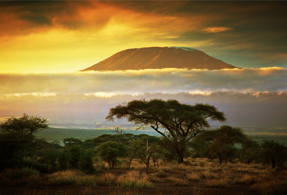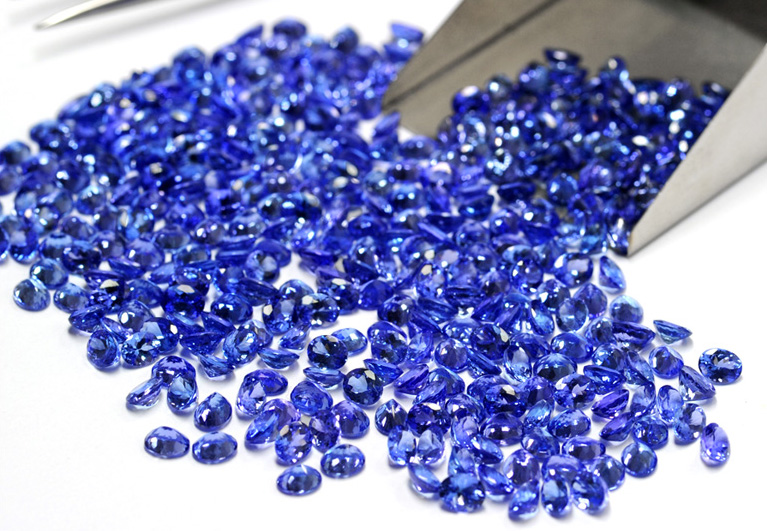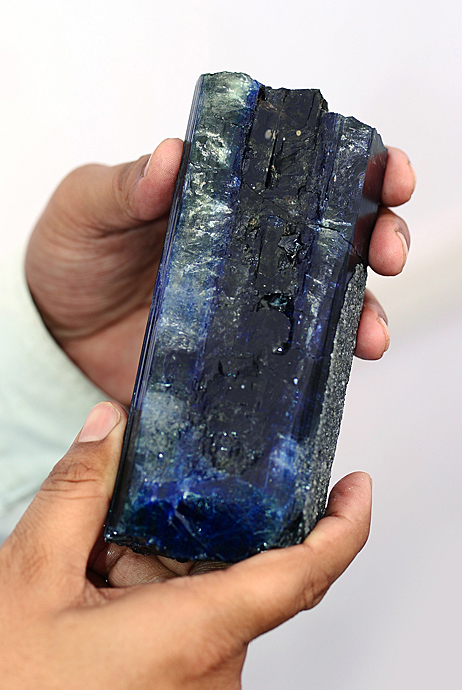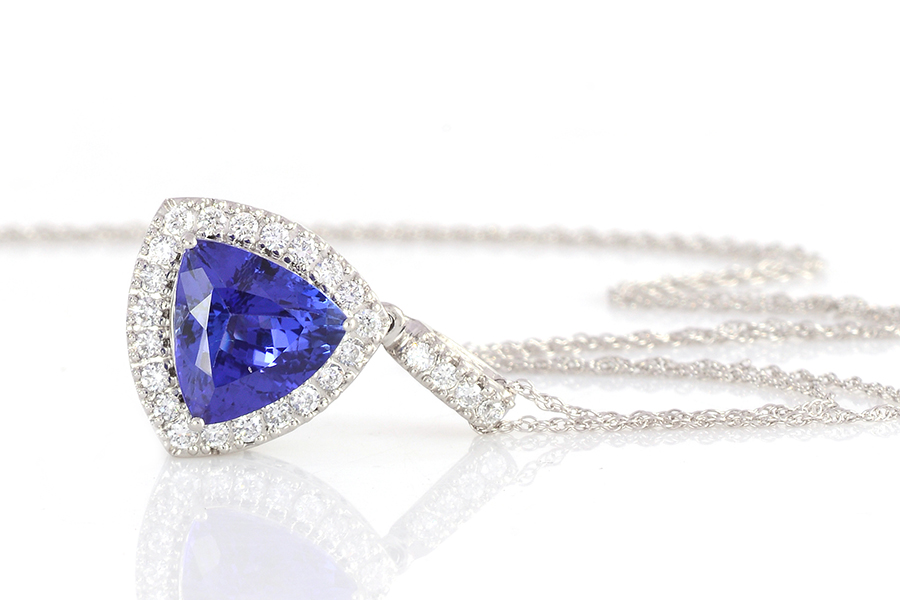Tanzanite
Its incredible rarity and beauty has skyrocketed tanzanite to the highest ranks of the gemstone kingdom. A thousand times rarer than diamond, the kaleidoscope of blues and violets captivate and allure.
Tanzanite is a blue-violet variety of the mineral zoisite. Its colors vary from deep, dark royal blue with flashes of red to light cornflower or periwinkle blue. The deepest blues are the rarest. The flattering cornflower blue and lilac shades are popular and affordable options. This gem is famous for having multidimensional color and being exceptionally brilliant. It exhibits a strong amount of pleochroism, meaning that it appears different colors when viewed from different angles. Tanzanite has a special three-dimensional version of pleochroism, making it a trichroic specimen. This gem shifts between shades of blue, violet and burgundy. Tanzanite has a single source in Tanzania. Recently, deeper mining practices have unearthed extremely rare pink, orange, yellow and green varieties. Blue tanzanite undergoes a mild heat treatment to enhance its color. However, this process merely complements the natural geological process, and there is no chemical or structural difference between heated and unheated tanzanite.
- The world's largest faceted tanzanite is 737.81 carats. The largest rough crystal weighs 16,839 carats (more than six pounds).
- Tanzanite has been called the stone of transmutation, owing to its pleochroism properties. It is thought to aid in exploring psychic abilities and overcoming communication difficulties.
- Tanzanite creates a calm and soothing work environment, providing solutions to problems when there seems to be none.
- Crystal healers use tanzanite to strengthen the immune system, detoxify the blood and improve vitality. It is also thought to protect against the side-effects of medicine or surgery.
LOCATION: Tanzania
The world's only known source of tanzanite was discovered deep in the foothills of Mount Kilimanjaro in Tanzania, East Africa in 1967. Geologists say the chemical environment required to form this gem is so unique that the probability of discovering another tanzanite deposit is less than one in a million. The quality and quantity of gem deposits vary and the production of sellable rough is not consistent at all depths. If other deposits are not located (and that seems unlikely), geologists estimate the original supply of tanzanite will dry up within 30 years.

- Ranks 6.5 on the Mohs hardness scale.
- Colors display deep, dark royal blue, indigo, cornflower, periwinkle or lilac with burgundy and violet undertones.
- Sourced from Tanzania.
- Member of the zoisite family.
- Also known as zoisite or tanjeloffite.
- Birthstone for December.
- Traditional gift for 24th anniversary.





